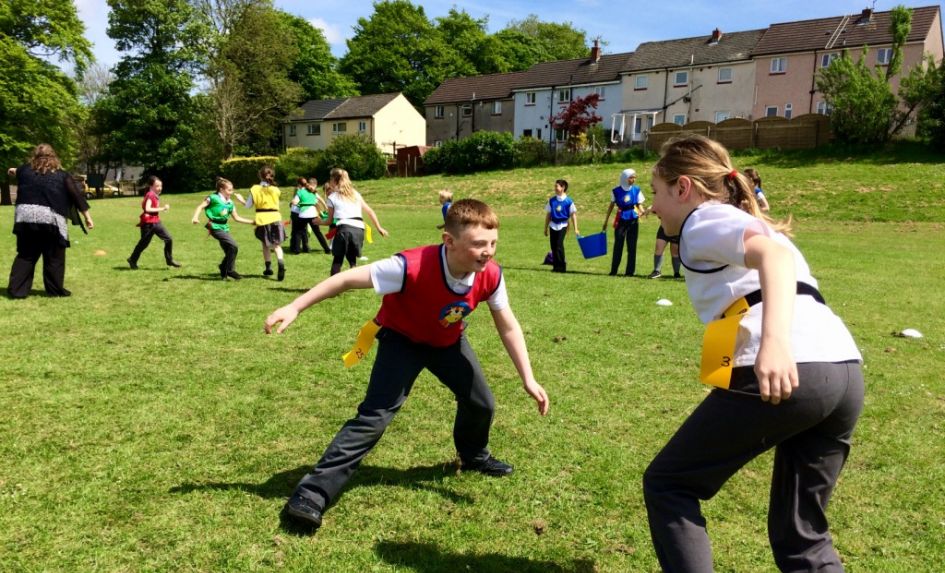Ali Oliver
Chief Executive of the Youth Sport Trust
There’s so much potential for what schools can achieve with this extra funding – it presents the best chance we have in a generation to really transform PE and harness its potential to improve children’s wellbeing.
This generation is facing a health crisis, as it experiences the lowest levels of physical, social and emotional wellbeing on record, so we must be ambitious. By 2020, we want to see every primary school teacher professionally developed to help teach physical literacy with the same skill and passion as language literacy and numeracy. For all the training a primary school teacher receives, they often get very little guidance on how to educate their pupils in and through movement, exercise and physical activity.
Children’s first formative experiences of PE at primary school has an impact which can last a lifetime. Get it right, and we’ll transform the life chances of a generation. Get it wrong, and too many children will continue to miss out on the benefits that physical activity brings to their health, happiness and wellbeing.
@youthsporttrust
youthsporttrust.org
Bryn Llewellyn
Former teacher and school leader, founder of Tagtiv8
When the long-awaited announcement about PE and Sport Premium Funding was made last term, schools were suddenly inundated with emails from sport coaching companies outlining their services. Savvier teachers and school leadership teams confined said emails to their junk and spam folders.
Fortunately, a number schools now seem to be following their lead, and are looking to providers who can offer them a win/ win when it comes to their health and education provision – solutions based on actual research, rather than a case study and a few testimonials.
The ideas underpinning Tagtiv8 were formed when I was working as a teacher and school leader. Tagtiv8 isn’t a PE scheme, but a programme designed to deliver learning in mathematics and English through physical activity. Yes, we do have some anecdotes and smiles, it’s true – but they’re now backed up by genuine research undertaken at Leeds Beckett University, which shows the impact Tagtiv8 can have – you can read more about it at tinyurl.com/ tagtiv8-research.
Steve Busby
Strategy Director, The PE Passport
You might be tempted to join others in looking outside the box, but don’t – at least not initially. Your chief priority should be on ensuring that the standard of teaching and learning at your school is good to outstanding.
Get the best advice you can from others, be it your LEA advisor or an independent consultant; it’s also worth involving a named governor at this stage. Use the self-evaluation audit template developed by the Association for Physical Education and the Youth Sport Trust (tinyurl.com/esp-impact) to ensure that your use of the Sport Premium is accurately reported and consistent with the priorities of your school development plan.
Involve all staff in the process and give pupils a voice too. If your staff want to adopt a particular scheme, make sure it can produce data that demonstrates impact. If there’s demand among your pupils for a broader curriculum, get them to suggest areas that might excite and challenge them, and be sure to allocate plenty of time for supporting and monitoring your Sport Premium activities.
@pe_passport
primarypepassport.co.uk
Active Teaching
Ian Pickles, imoves
The doubling of the PE and Sport Premium funding should be a welcome boost for all schools, but it comes with the expectation that schools will engage pupils in at least 30 minutes of structured activity each day (half the minimum 60 minutes of daily physical activity recommended for all 5 to 18-year-olds by the Chief Medical Officer).
Activity is now known to considerably boost cognitive learning and academic performance. Small blasts of regular activity throughout the day will contribute higher grades, improved behaviour and healthier, happier children. Primary-aged children on average sit for four to five hours per day, which we now know can be detrimental to their learning and wellbeing. Put simply, activity not only makes them fitter and healthier, it also improves their sense of well-being, behaviour and learning.
imoves uses a three-step process to help schools manage change and adopt a more active timetable, facilitated by their existing workforce.
Step 1 – The ‘why do it?’
This is all about the current mindset of your school relating to physical activity. Step 1 calls for senior leadership buy-in to whole school improvement, so that the long-term benefits of activity across health, wellness and learning can be realised. Many schools are making huge strides in doing this already. Schemes to encourage active travel to and from school and Change4Life after-school clubs are popular, but a number of schools are now starting to look at the curriculum itself, to see how activity can be incorporated into lessons and raise standards in parallel.
Step 2 – Try it out
Pilot some ideas with a few teachers who possess the necessary tools and expertise. These could include daily ‘activity blasts’ and lessons that incorporate elements of active learning.
Step 3 – Roll-out
By gathering your success stories to build momentum with peers, major strides can be made in improving your school’s learning, wellness and health through just a few easy changes. It’s with that in mind that imoves recently developed its ‘Active Classroom’ series, which comprises over a thousand lessons and activities that are easy to use and include both active breaks and active lessons across a range of subjects, including literacy, science, PHSE and mindfulness.
To find out more about how imoves works and to trial some of the lessons, visit imoves.com or follow @imovesactive.










